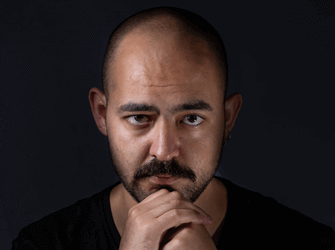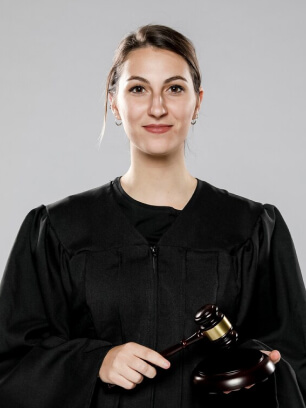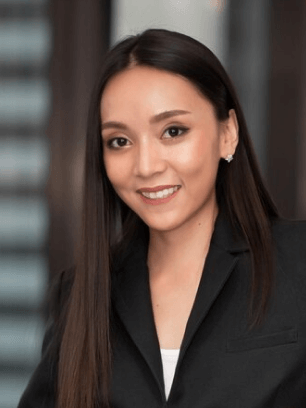I offer my advanced level of legal assistance.
23K+
Critical cases solved
successfully
14+
Awards
achievement
My practice area
Case Study

Lawyer of the year
Following Valley’s demise in 1924, the legal firm adopted the name “The Law and Royalty-Free Company.”
⭐ Worked With world top companies ⭐


Nevine Acotanza
Chief Operating OfficerChief Operating Officer
Mar 4, 2015 - Aug 30, 2021 testMr. Lee displayed remarkable responsiveness, professionalism, expertise, and proficiency. He swiftly grasped the intended concept and guided me in creating an elegant and captivating presentation.

Jone Duone Joe
Operating OfficerOperating Officer
Mar 4, 2016 - Aug 30, 2021Sarah exhibited remarkable responsiveness, professionalism, knowledge, and expertise. She quickly understood the intended concept and guided me in creating a sleek and aesthetically pleasing presentation.

Nevine Dhawan
CEO Of OfficerCEO Of Officer
Mar 4, 2016 - Aug 30, 2021Maecenas finibus nec sem ut imperdiet. Ut tincidunt est ac dolor aliquam sodales. Phasellus sed mauris hendrerit, laoreet sem in, lobortis mauris hendrerit ante. Ut tincidunt est ac dolor aliquam sodales phasellus smauris
Join With Us

Jessia Urmi
Junior lawyer

Devid Lee
Senior Attorney

Brett Sam
General Attorney

Florina Gomez
Junior lawyer

William Van
General Lawyer
Contact With Me

Nevine Acotanza
Chief Operating OfficerI am available for freelance work. Connect with me via and call in to my account.
Phone: +012 345 678 90 Email: admin@example.comMy advice to people.
Learn to Learn before you Learn to Earn.

Learn to Learn before you Learn to Earn.
Words of Wisdom 1: Learn to Learn
Although I don’t see myself as a person that someone should take wisdom from, but I do have a lot of opinions about life and here’s one of them. In my opinion, one should first learn to be efficient in learning before their journey of learning anything. It’s like sharpening your axe before cutting 1000 woods; you may want to learn the best skill of them all before you embark on your journey as a student of knowledge throughout life.
In my days of university, I saw people put in efforts to get good grades. I didn’t make much effort myself and did very well, while others worked harder without any luck. Why is that the case? Effort does not equal results; you have to be both smart and hardworking to win. What I did was simple: I was attentive in class and cleared all my ambiguities then and there by asking a lot of questions – a lot.
- I used to prepare with my fellow classmates before exams and often tutored them, even if I myself didn’t know the concepts.
- Before entering the exam, I would memorize key headings and write them down in the exam rough work section if there was time.
- For each topic, even if I didn’t remember the headings, I would always know the number of headings for each of the topics and made sure I realized all of them.
- While attempting each question, I would know that every answer has to have the following: Introduction, Key Points, Examples, Special Element (Story, Table, or Diagram), and Summary.
I think that was it, and pretty much minimized the waste of time where I would have to search the internet and books. Instead, I asked the teacher and maximized efficiency of time by teaching others, memorizing headings, and understanding what would give me good grades.
I did very well in my university without studying as much, and I never planned efforts to do this; this was very automatic for me. But when I see others fail while realizing I did much less to prepare, I contemplated whether it was luck or something else.
Learning to learn will help you throughout life with difficult learning situations; you’ll know how to make it automatic. Finding ways to lean process makes it efficient and waste less of your resources. Learning more with less time is like knowing more than what you will otherwise; would you not want that?
Follow me for a Part-2 where I will break down the fundamentals of learning new skills. I will share how I have learned almost every skill there is in the digital landscape.
My New Blog
My New Blog
[Your Bold Blog Title That Works for Any Topic]
By Your Name Aug 25, 2025 ~8 min read
A short, compelling promise of value in one or two sentences that sets expectations for the reader.
Why This Matters
Open strong: speak to a pain, aspiration, or opportunity your reader recognizes. In a few lines, clarify what you’ll cover and the outcome they’ll get.
“A memorable one-liner that frames the topic and earns the next scroll.”
Big Idea #1 — State It Clearly
Explain the first core concept in plain language. Keep sentences short and concrete. If needed, define key terms like this-term once, inline.
- Signal: What good looks like when this idea is applied well.
- Smell: A common anti-pattern or pitfall to watch for.
- Step: One practical action a reader can take today.
Big Idea #2 — Make It Actionable
Translate concept into action. Show a mini-workflow, quick checklist, or micro-example the reader can replicate.
Quick Start: Do A → B → C. If stuck, reduce scope and repeat once with tighter constraints.
# Example snippet — replace with your domain
SELECT id, score
FROM results
WHERE score >= 0.8
ORDER BY score DESC
LIMIT 10;Big Idea #3 — Add Nuance
Explain tradeoffs and edge cases so readers avoid false certainty. Offer a rule of thumb to decide between paths.
Quick Answers
Does this work for X? Yes, with tweak Y. Start small, validate with metric Z.
How long will it take? Most people see initial results within N days.
Wrap-Up
Summarize the single takeaway you want remembered. Re-state the next action and set a simple challenge to apply it within 24 hours.
If you found this useful, consider bookmarking or sharing it with a teammate.
<!– BEGIN: Minimal Blog Post (content-only, safe for WordPress) –>
<article class=”wp-article” role=”article”>
<style>
/* —– Scoped styles (won’t affect the rest of your site) —– */
.wp-article{ –w:48rem; –text:#0f172a; –muted:#475569; –rule:#e5e7eb; –accent:#2563eb; }
.wp-article{ color:var(–text); font-family: ui-sans-serif, system-ui, Inter, Segoe UI, Roboto, Arial; }
.wp-article .wrap{ max-width:var(–w); margin:0 auto; padding:0 1rem; }
.wp-article a{ color:var(–accent); text-underline-offset:2px; }
.wp-article h1,.wp-article h2,.wp-article h3{ line-height:1.25; margin:1.2em 0 .6em; }
.wp-article h1{ font-size:clamp(2rem,3.2vw,2.6rem); margin-top:.4rem; }
.wp-article h2{ font-size:clamp(1.4rem,2.2vw,1.8rem); }
.wp-article h3{ font-size:clamp(1.1rem,1.6vw,1.25rem); }
.wp-article p,.wp-article li{ line-height:1.75; }
.wp-article p{ margin:.9rem 0; color:var(–text); }
.wp-article .meta{ color:var(–muted); font-size:.96rem; display:flex; gap:.6rem; flex-wrap:wrap; align-items:center; }
.wp-article .dot{ width:.25rem;height:.25rem;background:var(–muted);border-radius:50%;display:inline-block }
.wp-article figure{ margin:1.1rem 0; }
.wp-article figure img{ width:100%; height:auto; border-radius:12px; display:block }
.wp-article figcaption{ color:var(–muted); font-size:.92rem; margin-top:.4rem }
.wp-article .lead{ font-size:1.08rem; color:var(–muted); margin-top:.4rem }
.wp-article blockquote{ border-left:4px solid var(–accent); padding:.2rem 1rem; margin:1.2rem 0; font-style:italic; background:#f8fafc; border-radius:8px }
.wp-article ul{ padding-left:1.2rem; }
.wp-article hr{ border:0; height:1px; background:var(–rule); margin:2rem 0 }
.wp-article pre,.wp-article code{
font-family: ui-monospace,SFMono-Regular,Menlo,Consolas,monospace;
}
.wp-article pre{
background:#0b1220;
color:#e5e7eb;
border-radius:10px;
padding:1rem;
overflow:auto;
font-size:.95rem;
position: relative; /* Add this */
}
.wp-article pre code {
background: transparent; /* Add this */
color: inherit; /* Add this */
padding: 0; /* Add this */
}
.wp-article code{
background:#f1f5f9;
padding:.1rem .3rem;
border-radius:6px;
}
.wp-article .tip{ background:#f0f9ff; border:1px solid #e0f2fe; border-left:4px solid #0ea5e9; border-radius:10px; padding:.8rem 1rem; color:#0b3a53 }
.wp-article .end{ color:var(–muted); font-size:.96rem; }
</style>
<div class=”wrap”>
<!– Title + Meta + Deck –>
<header>
<h1><strong>SEO Maximus: Complete Guide to Advanced Search Engine Optimization</strong></h1>
<p class=”meta”>
<span>By <strong>Alexandra Green</strong></span>
<span class=”dot” aria-hidden=”true”></span>
<time datetime=”2025-08-26″>Aug 26, 2025</time>
<span class=”dot” aria-hidden=”true”></span>
<span>~12 min read</span>
</p>
<p class=”lead”>Unlock the power of advanced SEO and AEO strategies to enhance your search visibility and drive organic traffic like never before.</p>
</header>
<!– Hero Image –>
<figure>
<img alt=”Illustration of advanced SEO techniques boosting website traffic”
src=”data:image/svg+xml;utf8,<?xml version=’1.0′?><svg xmlns=’http://www.w3.org/2000/svg’ width=’1600′ height=’900′><defs><linearGradient id=’g’ x1=’0′ y1=’0′ x2=’1′ y2=’1′><stop offset=’0%’ stop-color=’%232563eb’/><stop offset=’100%’ stop-color=’%2360a5fa’/></linearGradient></defs><rect width=’100%’ height=’100%’ fill=’url(%23g)’/><text x=’50%’ y=’52%’ text-anchor=’middle’ dominant-baseline=’middle’ font-size=’36’ fill=’white’ font-family=’Arial, sans-serif’>Hero Image</text></svg>”>
<figcaption>Maximize your search engine visibility through advanced SEO and AEO techniques.</figcaption>
</figure>
<!– Introduction –>
<section>
<h2>Why This Matters</h2>
<p><strong>In today’s digital landscape,</strong> achieving high search engine rankings is not just about visibility; it’s about survival. With more businesses competing online, understanding advanced SEO and AEO can be the edge you need to outperform your competitors.</p>
<blockquote>“Your website’s visibility in search engines is as critical as its content.”</blockquote>
</section>
<!– Core Section A –>
<section>
<h2>Big Idea #1 — Master Technical SEO Fundamentals</h2>
<p>Technical SEO forms the backbone of your search engine optimization efforts. It’s crucial for ensuring that search engines can crawl and index your website efficiently. Key areas include:</p>
<ul>
<li><strong>Page Speed:</strong> Ensure your site loads in under 3 seconds.</li>
<li><strong>Mobile Optimization:</strong> Use a responsive design to cater to mobile users.</li>
<li><strong>Secure Protocol:</strong> Implement HTTPS to secure user data and improve rankings.</li>
</ul>
<figure>
<img alt=”Diagram showing the components of technical SEO”
src=”data:image/svg+xml;utf8,<?xml version=’1.0′?><svg xmlns=’http://www.w3.org/2000/svg’ width=’1400′ height=’700′><rect width=’100%’ height=’100%’ fill=’%23f1f5f9’/><text x=’50%’ y=’52%’ text-anchor=’middle’ dominant-baseline=’middle’ font-size=’28’ fill=’%2399a1a9′ font-family=’Arial, sans-serif’>Inline Image</text></svg>”>
<figcaption>Technical SEO ensures your site is accessible and indexable by search engines.</figcaption>
</figure>
</section>
<!– Core Section B –>
<section>
<h2>Big Idea #2 — Embrace AEO for Enhanced Visibility</h2>
<p>Answer Engine Optimization (AEO) is about optimizing your content to appear in voice search and featured snippets. This strategy focuses on providing concise, accurate answers to common queries.</p>
<div class=”tip”><strong>Quick Start:</strong> Structure your content with clear headings, bullet points, and direct answers to common questions.</div>
<pre><code># Example of a FAQ schema markup
{
“@context”: “http://schema.org”,
“@type”: “FAQPage”,
“mainEntity”: [{
“@type”: “Question”,
“name”: “What is AEO?”,
“acceptedAnswer”: {
“@type”: “Answer”,
“text”: “AEO stands for Answer Engine Optimization, focusing on optimizing content for voice search and featured snippets.”
}
}]
}</code></pre>
</section>
<!– Core Section C –>
<section>
<h2>Big Idea #3 — Develop a Robust Content Strategy</h2>
<p>A comprehensive content strategy is critical to attract and retain users. It’s essential to align your content with user intent and provide valuable insights.</p>
<ul>
<li><strong>Keyword Research:</strong> Identify long-tail keywords that match user queries.</li>
<li><strong>Content Quality:</strong> Produce high-quality, informative content that addresses user needs.</li>
<li><strong>Content Refresh:</strong> Regularly update your content to keep it relevant and accurate.</li>
</ul>
<figure>
<img alt=”Flowchart illustrating a content strategy process”
src=”data:image/svg+xml;utf8,<?xml version=’1.0′?><svg xmlns=’http://www.w3.org/2000/svg’ width=’1400′ height=’700′><rect width=’100%’ height=’100%’ fill=’%23e2e8f0’/><text x=’50%’ y=’52%’ text-anchor=’middle’ dominant-baseline=’middle’ font-size=’28’ fill=’%238a94a6′ font-family=’Arial, sans-serif’>Supporting Image</text></svg>”>
<figcaption>A strategic content plan aligns with user intent and search engine demands.</figcaption>
</figure>
</section>
<!– Light FAQ (optional, compact) –>
<section>
<h3>Quick Answers</h3>
<p><strong>What is the difference between SEO and AEO?</strong> SEO encompasses all optimization efforts for search engines, while AEO focuses on optimizing content for voice search and direct answers.</p>
<p><strong>How often should I update my content?</strong> Aim for a quarterly review to ensure accuracy and relevance.</p>
</section>
<hr>
<!– Conclusion –>
<section>
<h2>Wrap-Up</h2>
<p>Embrace advanced SEO and AEO strategies to gain a competitive edge in search rankings. Start by auditing your current SEO practices and integrating AEO techniques to enhance visibility.</p>
<p class=”end”>If you found this guide useful, download our free <a href=”#”>SEO audit checklist</a> to kickstart your optimization journey.</p>
</section>
</div>
</article>
<!– END: Minimal Blog Post –>








